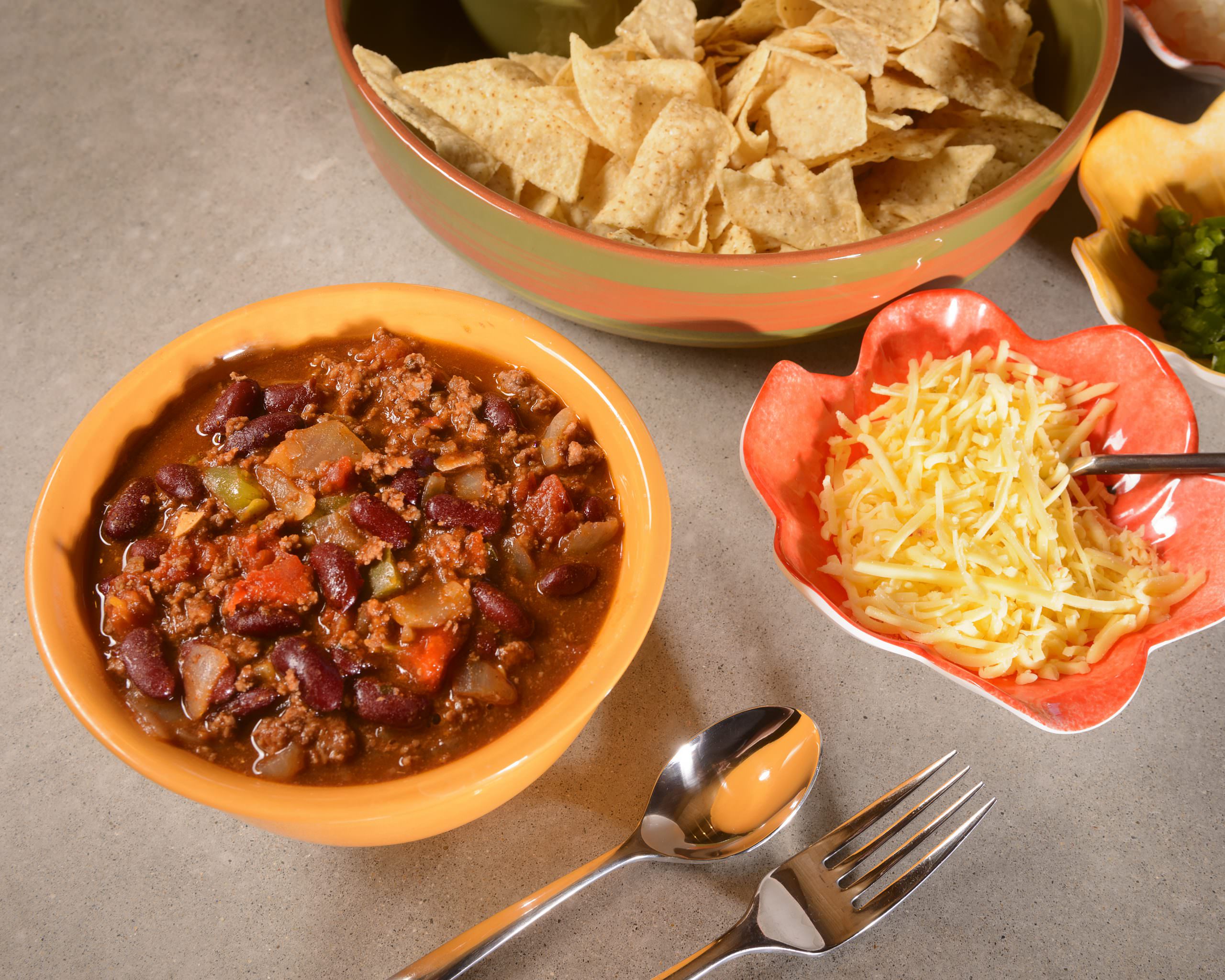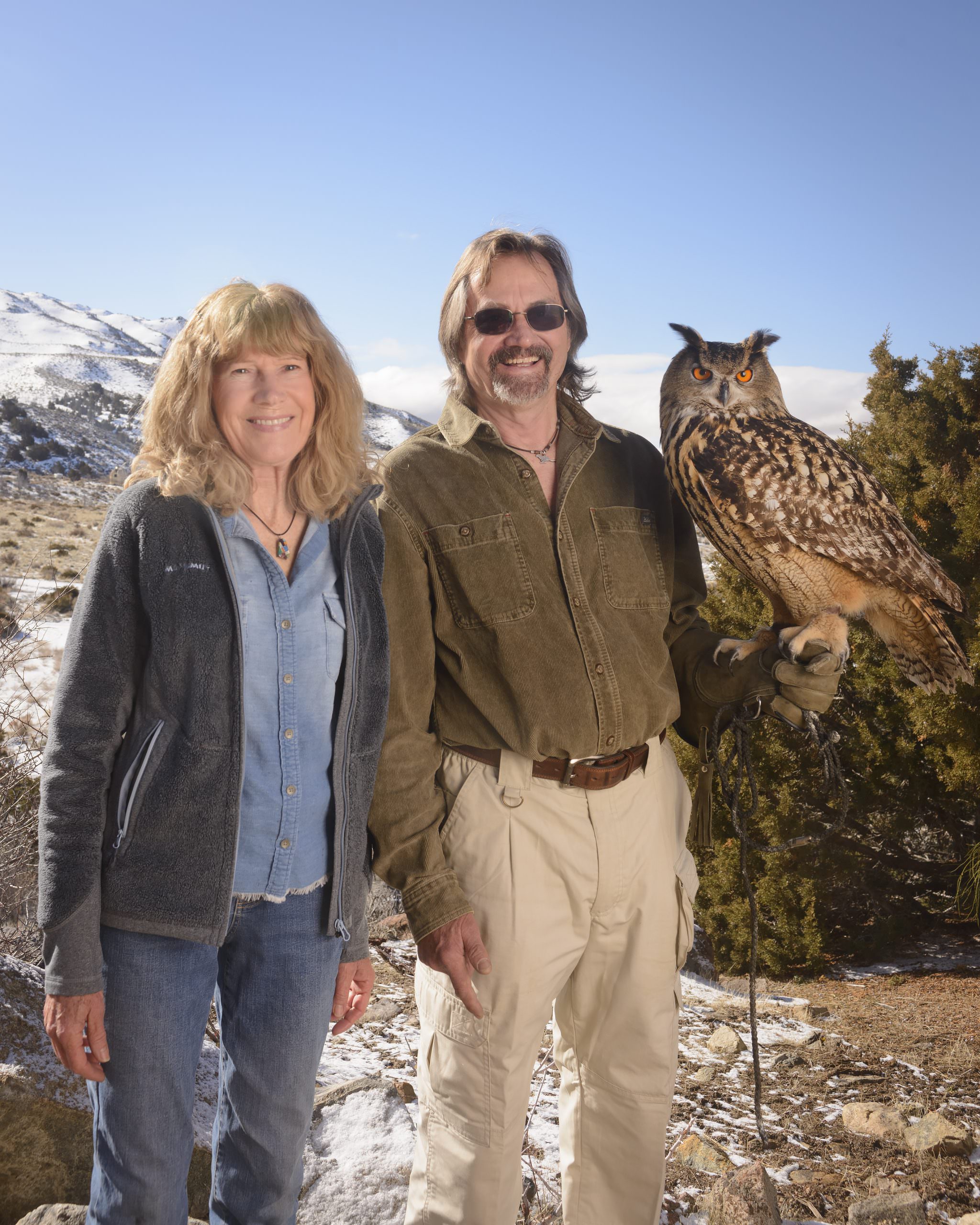Running a wildlife sanctuary in the high desert increases all species’ appetites.
Diana Hiibel sticks her hand through a black cage and massages the thick, spotted fur of Moyo, an African cheetah who is rubbing up against his pen. The rumbling purr that comes from the animal is deep and physically perceptible, and sounds eerily similar to a cherry Aston Martin. Cheetahs, such as Moyo and his buddy, Jamar, are the world’s fastest species of land mammal in the world, clocking up to 70 miles per hour. These sports cars of the animal world need quality fuel.
“The boys primarily get a feline- and canine-based diet,” Diana says. “They eat beef and game and sometimes even whole quail, but they don’t like to eat liver.”
Meet the Ark’s stars
The felines live in a large enclosure that allows for these fast dashes at Animal Ark in North Reno. For nearly 40 years, Diana and Aaron Hiibel have been providing a safe haven for abandoned, injured, and other non-releasable wildlife. The 38-acre conservation area features primarily native North American predators but also includes some exotic animals such as Moyo and Jamar, who both come from South Africa. The Animal Ark has large enclosures that feature native trees, rocks, and vegetation that simulate natural habitat. Many of the facilities also are powered by solar energy. The Ark is open from March to November for educational tours and special programs, such as the cats’ Cheetah 500 (May 26 this year).
Diana has a relaxed demeanor that softens even more when she sees the Animal Ark’s menagerie peek at her from behind enclosures or pens. Both she and Aaron greet each of the animals by name and ask how they are doing today. Daniel, the mountain lion, normally elusive in the wild, perks up his ears at her voice. Foreste, the gyrfalcon, flies back and forth in his pen, and Lily, the tiger, looks ravishing surrounded by sagebrush and blue sky. Other animals at the Ark include Gibbs, Gracie, and LG, the black bears; Jake and Elwood, the red foxes; Keira, the kit fox; and Rocket, Rey, and Princess Leia, three energetic raccoons.
One of the most unusual animals is Louise, the Eurasian eagle-owl. She is part of the Animal Ark’s Raptor Outreach program and travels with two falconers to local schools so children can learn about the importance of raptors in the environment. The Eurasian eagle-owl is one of the largest owls in the world and, with a wingspan of more than six feet, makes an impressive sight.
Feeding about 30 active critters every day is no easy task and happens with precision at Animal Ark. Every week, the Hiibels and the Animal Ark team purchase about 500 pounds of food for the animals at a variety of local stores and distributors, including WinCo Foods, Bonanza Produce, and Calvada Food Sales.
The Ark’s food preparation area is filled with fruits and vegetables, such as avocados, carrots, and butternut squash, as well as bulk nuts and oatmeal. The freezers hold large packages of Nebraska Brand meat for zoo carnivores since the bears can eat up to 50 pounds of meat per day (when they are not hibernating in the winter). The cabinets are stocked with dried shrimp for the raccoons, catnip for the smaller cats, mice for the predatory birds, and pig ears for the mountain lion. Along with their regular meals, the animals also receive daily enrichment programs that include both food and environmental stimulation.
“Enrichment protocol mirrors natural habit and behaviors,” Diane says. “It develops their sensory and motor skills as well.”
Many of the enrichment programs sound almost like a child’s birthday party. The bears’ programs, for example, include bobbing for apples, piñatas, skewered fruit on branches, and fishsicles.
Squeezing in human food
Taking care of lions, tigers, and bears doesn’t leave much time for human food, but the Hiibels take a cue from their animals’ nutrition to keep themselves as healthy as they can. Like the desert tortoise, Mr. Peabody, they’ve adopted dandelions as a salad green and integrate Standard Process supplements into their diet. The animals receive the veterinary versions.
“Even before Aaron and I were married, I had an interest in nutrition and would seek out foods that were wholesome and nutritious,” Diane says. “This has always carried over with trying to keep us healthy with the work environment that we have here. There’s not always a lot of time.”
Diana and Aaron lived for decades in the Rock House on Animal Ark property. About three years ago, Aaron began construction of a new home on land they own next to the sanctuary. The Log Cabin (the Hiibels like to refer to it as “TLC”) features beautiful logs from Oregon, a room dedicated to Aaron’s travels in Africa, and a staircase with balusters made from steel rescued from the original Virginia Street Bridge built in 1905. The home sits on top of a hill with immense views of the mountains, surrounded by juniper bushes and playful jackrabbits.
Diana is the main chef in the family, but the wide deck on the new cabin is perfect for cooking steaks on the barbecue, which Aaron enjoys. They both try to avoid sugar, and Diane will use half the amount of sugar asked for in a recipe. The couple looks for gluten-free items and uses as many organic ingredients as possible.
“We try to be careful with all the foods we buy so we can keep ourselves healthy,” Diana says.
Sometimes the Hiibels need to literally take their work home with them. The three raccoons are sensitive to cold weather and will stay in a cage inside the Hiibels’ kitchen. The entire family eats together, and the raccoons enjoy their favorite item: baked fish filets.
“Despite their being called ‘trash pandas,’ our observations of raccoons over the years indicate they are intelligent manipulators,” Diane says. “The opportunity to watch growing youngsters has helped us learn more about the raccoons’ sensory receptors in their paws, general agility, play behavior, communications, and how adept they are at dispensing a crawfish!”
Plan a Visit
Animal Ark
1265 Deerlodge Road, Reno
Animalark.org
TLC (The Log Cabin) Chili
(courtesy of Diana Hiibel, co-founder/ programs manager, Animal Ark in Reno. Serves 6 to 8)

“I use organic ingredients whenever possible,” Diana says. “This very easy recipe is versatile with personal preferences or changes. The kidney beans and stewed tomatoes give the recipe its unique flavor. I have prepared this meal for Animal Ark’s staff, volunteers, or my family and friends. Everyone likes it, including the children. Make more for a larger group or freeze some for a future use. It goes well with chips and salsa.”
2 pounds ground beef
4 cloves garlic
1 large or 2 medium bell peppers
2 medium yellow onions
3 cans kidney beans, drained
3 cans stewed tomatoes
2 tablespoons chili powder, or to taste
¾ teaspoon salt, or to taste
In frying pan, cook beef and garlic together until meat is crumbled. When beef is cooked, drain excess fat into large pot.
While meat is cooking, chop bell pepper and onion into small- to medium-sized pieces and sauté in the pot of drained beef fat.
Add kidney beans to sautéed bell peppers and onion. Add canned tomatoes and break up chunks into smaller pieces. Add chili powder, salt, and beef. (Diane uses chili powder mix from Natural Grocers called Chili Powder Salt Free Organic, which contains chili pepper, cumin, oregano, and garlic, but any chili powder will do.) Cook to boiling and reduce to simmer for at least 1 hour before serving.


